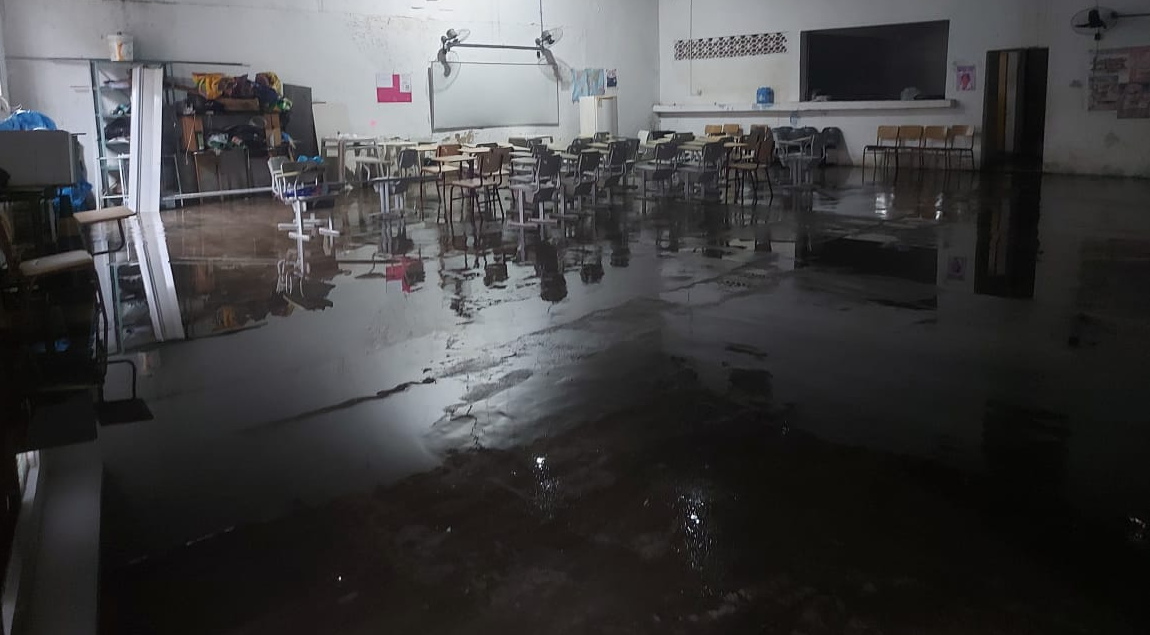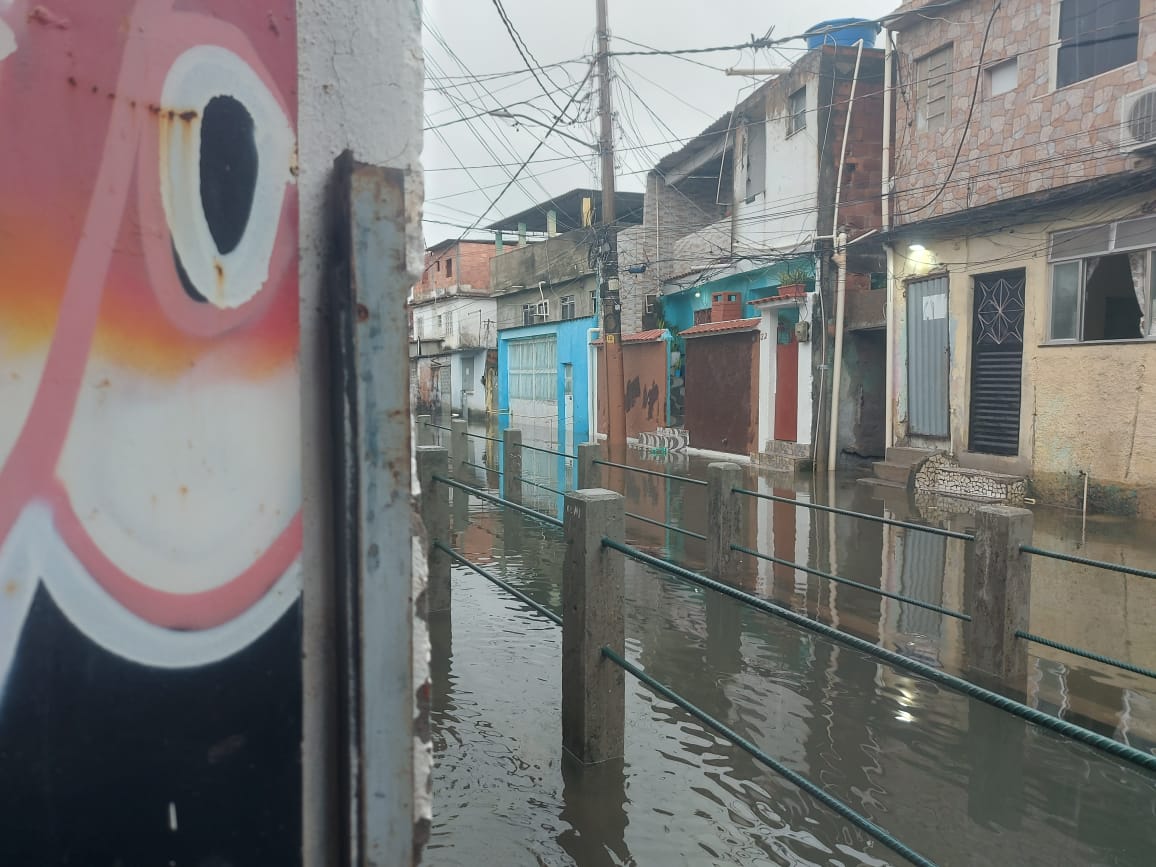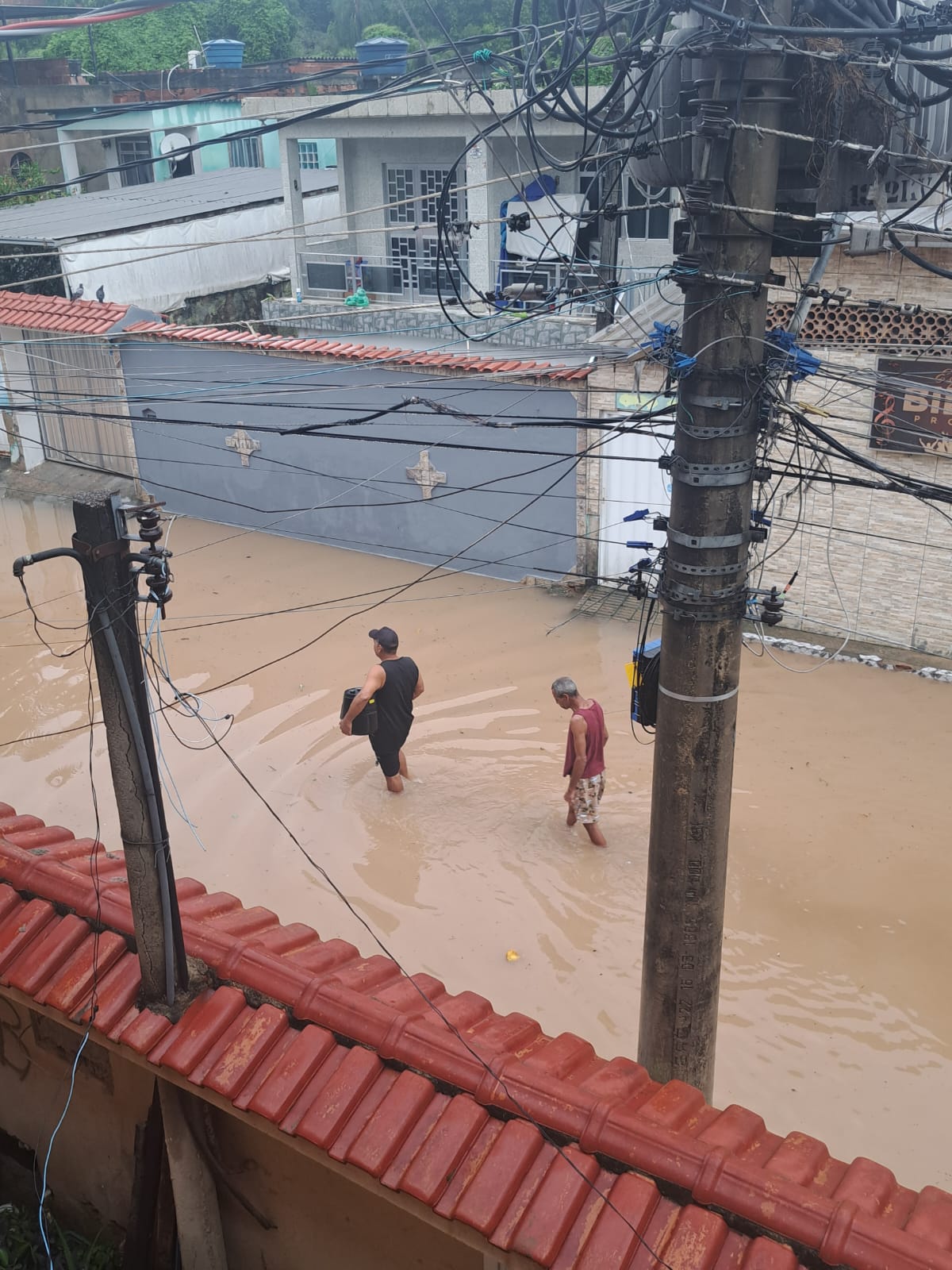
Clique aqui para Português
This article is part of RioOnWatch’s ongoing #VoicesFromSocialMedia series, which compiles perspectives posted on social media by favela residents and activists about events and societal themes that arise.
Year after year, the problem persists: favelas and peripheral areas lack climate resilience in the face of the heavy rains that batter Rio de Janeiro every summer and early autumn. The storms that hit Greater Rio over the weekend of April 4-5 once again caused serious damage. Flooded roads, submerged homes, fallen trees, material losses, and sleepless nights were just some of the impacts shared by community media and residents. At least this time, no lives were lost due to State negligence.
In Rio’s North Zone, high landslide risks in the Formiga and Borel favelas, along with an actual landslide in Morro do Andaraí, led the city’s Civil Defense to activate ten evacuation sirens across these communities.
Ver essa foto no Instagram
Despite the activation of warning sirens and the transmission of emergency alerts to cell phones to prevent deaths and reduce storm-related damage, public authorities continue to fall short of implementing effective solutions to address the lack of climate resilience in favelas. The issue is chronic and affects favelas disproportionately—15 times more than the formal city. This disparity is expected to grow in the coming years, as climate change and resulting extreme weather events increasingly deepen the climate vulnerability of favelas—a reality that weighs heavily on the minds of many Rio residents.
On social media, community networks reported that on the night of Friday, April 4, the heavy storm caused severe flooding on Avenida Brás de Pina, in Vista Alegre, a neighborhood in the city’s North Zone. Partially submerged cars and the force of rushing water caused panic among residents and passersby. Stranded by the flood, a woman exclaimed in a video, “How am I supposed to get home, my God?!”
Ver essa foto no Instagram
Dawn on Saturday brought intense anxiety to Acari, a favela that experiences regular, severe flooding, also in the North Zone. Residents documented how the inundated Acari River flooded several parts of the community, its streets and alleys, making it impossible for residents to circulate. According to Rádio Tupi, the flooding also reached streets in the communities of Fazenda Botafogo and Parque Colúmbia.
Still in Acari, the Terra Nostra area reported multiple flooded areas, including inside a school. According to community organizers, the event put around 250 families at risk.
Ver essa foto no Instagram

Also in the North Zone, in Complexo do Alemão, the storm on the morning of Saturday, April 5, brought down a tree in front of a home located in Largo dos Metralhas, blocking access to the residence. Fortunately, no one was injured. As it fell, the tree snapped the power lines connected to the house, leaving families without electricity.
Parts of Rio de Janeiro’s West Zone also woke up underwater. In Vila Kennedy, Rua U was flooded by 5:20am. “Check out the little trash bag taking a stroll, looking for the next storm drain to clog up and make the pool even deeper,” read a post by community outlet Voz da Vila Kennedy.
Ver essa foto no Instagram
In Jardim Maravilha, also in the West Zone, the fear of losing everything to flooding kept Maria das Neves Fernandes awake through the night on Friday. Water filled her yard and came dangerously close to invading her home. In an interview with G1, she shared: “[I was] up all night, like every summer. We knew this could happen.” This is one of the most insidious effects of climate anxiety: robbing favela residents of sleep, peace of mind, and the feeling of safety in their homes.
In the Greater Rio Baixada Fluminense region, the municipalities of São João de Meriti—placed under maximum alert by the State Civil Defense—and Duque de Caxias were among the hardest hit by the rains. Despite intense precipitation across various parts of the city, with over 80mm of rainfall recorded in 24 hours, São João de Meriti did not experience major damage. Duque de Caxias, on the other hand, reported flooding in the Pantanal neighborhood, in Vila Rosário, along the Washington Luís Highway, and in Jardim Primavera, where residents and business owners lost furniture, appliances, and merchandise, with some reporting losses of up to R$6,000 (~US$1,000).
Ver essa foto no Instagram

